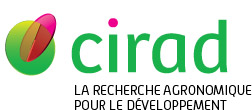Langlais Alexandra, Nicourt Christian, Bourblanc Magalie, Gaigné Carl. 2014. Livestock farming and nitrogen within the economic and social context. Advances in Animal Biosciences, 5suppl. : 20-27.
|
Version publiée
- Anglais
Accès réservé aux personnels Cirad Utilisation soumise à autorisation de l'auteur ou du Cirad. document_574175.pdf Télécharger (244kB) |
Résumé : Scientific literature in social sciences that deals with nitrate embraces two centuries, whereas very little socio-economic work has addressed other forms of reactive nitrogen. Nitrogen has always had an ambivalent role as both a raw material indispensable for the development of agricultural and a source of negative impacts. This ambivalence has accompanied the social history of livestock production and can explain the conflicting nature of the subject and the moderate environmental efficiency of environmental policies. The legal system is particularly complex. The main cause of territorial pollutions is linked to the industrialisation and spatial concentration of livestock production in France, as in numerous countries in Europe and North America. This conglomeration movement is translated by a concentration of animal manure, which drives to nitrogen balance surplus and associated serious environmental consequences.
Mots-clés Agrovoc : élevage, impact sur l'environnement, pollution par l'agriculture, nitrate, azote, polluant, engrais azoté, législation, Union européenne, environnement socioéconomique
Mots-clés géographiques Agrovoc : France
Classification Agris : L01 - Élevage - Considérations générales
P02 - Pollution
E50 - Sociologie rurale
Champ stratégique Cirad : Axe 3 (2014-2018) - Alimentation durable
Auteurs et affiliations
- Langlais Alexandra, Université de Rennes I (FRA)
- Nicourt Christian, INRA (FRA)
- Bourblanc Magalie, CIRAD-ES-UMR G-EAU (ZAF)
- Gaigné Carl, INRA (FRA)
Source : Cirad - Agritrop (https://agritrop.cirad.fr/574175/)
[ Page générée et mise en cache le 2024-01-28 ]




